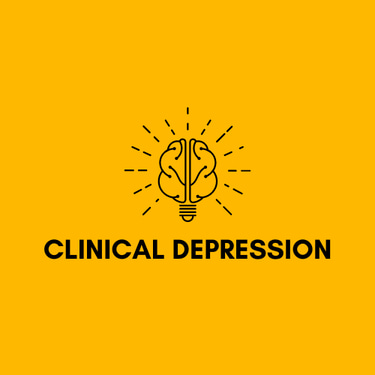For Questions: Text (833)233-0869
Cultural Perspectives on Anxiety Disorders: A Comprehensive Guide


Introduction
Anxiety disorders are among the most common mental health issues worldwide, affecting millions of people across different cultures. However, the way anxiety is perceived, understood, and treated can vary significantly depending on cultural perspectives. Cultural beliefs, practices, and societal norms play a crucial role in shaping the experience of anxiety, influencing how individuals express symptoms and seek treatment.
In this article, we will explore the concept of anxiety disorders from various cultural perspectives, highlighting the differences in perception, expression, and treatment approaches. Understanding these cultural variations can help healthcare providers deliver more effective and culturally sensitive care to individuals suffering from anxiety disorders.
Understanding Anxiety Disorders
Anxiety disorders encompass a range of conditions characterized by excessive fear, worry, and nervousness. These disorders can manifest in various forms, including Generalized Anxiety Disorder (GAD), Social Anxiety Disorder (SAD), Panic Disorder, and specific phobias. Symptoms of anxiety disorders may include physical symptoms like a racing heart, sweating, trembling, and psychological symptoms such as constant worry, restlessness, and difficulty concentrating.
The Role of Culture in Shaping Anxiety Disorders
Culture plays a significant role in how individuals experience and interpret anxiety disorders. Cultural norms, beliefs, and practices influence how people perceive mental health issues, including anxiety. For example, in some cultures, anxiety may be seen as a sign of weakness, leading individuals to hide their symptoms or avoid seeking help. In other cultures, anxiety may be understood as a spiritual or supernatural phenomenon, requiring different approaches to treatment.
Western Perspectives on Anxiety Disorders
In Western cultures, anxiety disorders are generally viewed through a medical model. They are seen as psychological conditions that require diagnosis and treatment by mental health professionals. The emphasis is often on biological and psychological factors, such as genetics, brain chemistry, and cognitive patterns. Treatment approaches in Western cultures typically include therapy, such as Cognitive Behavioral Therapy (CBT), and medication, such as antidepressants or anti-anxiety drugs.
The Western approach tends to prioritize individual responsibility for managing anxiety. Patients are encouraged to take an active role in their treatment, whether through therapy, medication, or lifestyle changes. However, this approach may not resonate with individuals from cultures that emphasize communal or holistic approaches to health.
Eastern Perspectives on Anxiety Disorders
In many Eastern cultures, anxiety disorders are often understood within a broader context of physical, emotional, and spiritual well-being. For example, in traditional Chinese medicine, anxiety may be seen as a result of an imbalance in the body's energy, or "qi." Treatment may involve acupuncture, herbal remedies, and practices like Tai Chi or Qigong to restore balance and harmony.
Similarly, in Indian culture, anxiety may be viewed through the lens of Ayurveda, an ancient system of medicine that emphasizes the balance between mind, body, and spirit. Ayurvedic treatments for anxiety may include meditation, yoga, dietary changes, and herbal supplements. In these cultures, the focus is often on holistic healing rather than simply addressing the symptoms of anxiety.
Indigenous Perspectives on Anxiety Disorders
Indigenous cultures around the world often have unique perspectives on anxiety disorders, viewing them as connected to community, nature, and spirituality. In some Native American cultures, anxiety may be seen as a disruption in one's connection to the natural world or community. Healing practices may involve rituals, ceremonies, and traditional medicines to restore balance and harmony.
In many Indigenous cultures, mental health is not seen as a separate entity from physical health. Instead, it is integrated into a broader understanding of well-being that includes social, spiritual, and environmental factors. This holistic approach can offer valuable insights into treating anxiety disorders in a way that respects and honors cultural traditions.
African Perspectives on Anxiety Disorders
In African cultures, anxiety disorders are often interpreted through a lens of spirituality and community. Mental health issues, including anxiety, may be attributed to spiritual forces, such as witchcraft, ancestral spirits, or divine punishment. As a result, treatment may involve seeking help from traditional healers, who use rituals, herbal remedies, and spiritual practices to address the underlying causes of anxiety.
In some African communities, the stigma surrounding mental health can be a significant barrier to seeking help. Anxiety may be seen as a sign of weakness or moral failure, leading individuals to hide their symptoms. However, there is also a strong emphasis on communal support, with family and community members playing a vital role in the healing process.
The Impact of Cultural Stigma on Anxiety Disorders
Cultural stigma surrounding anxiety disorders can vary widely across different societies. In some cultures, mental health issues are highly stigmatized, leading individuals to avoid seeking treatment for fear of being labeled as weak or crazy. This stigma can result in delayed diagnosis and treatment, exacerbating the severity of anxiety disorders.
In contrast, other cultures may have more accepting attitudes toward mental health, encouraging individuals to seek help when needed. Understanding the cultural context in which anxiety disorders occur is essential for healthcare providers to offer effective and compassionate care.
Stigma in Western Cultures
In Western societies, despite increased awareness and education about mental health, stigma surrounding anxiety disorders still exists. Many individuals may feel ashamed to admit they are struggling with anxiety, fearing judgment or misunderstanding from others. This stigma can be particularly pronounced in men, who may feel pressure to conform to societal expectations of stoicism and emotional strength.
However, efforts to reduce stigma in Western cultures have led to greater acceptance and understanding of anxiety disorders. Public awareness campaigns, mental health education, and the normalization of therapy have helped many individuals feel more comfortable seeking help.
Stigma in Eastern Cultures
In some Eastern cultures, the stigma surrounding anxiety disorders can be even more pronounced. Mental health issues may be seen as a family disgrace, leading individuals to conceal their symptoms and avoid seeking treatment. For example, in Japan, the concept of "honne" (true feelings) and "tatemae" (public facade) can create pressure to hide anxiety and present a calm and composed exterior, even when struggling internally.
This cultural emphasis on saving face and maintaining social harmony can make it difficult for individuals to acknowledge and address their anxiety. As a result, they may turn to alternative forms of support, such as traditional medicine or spiritual practices, rather than seeking professional help.
Stigma in Indigenous and African Cultures
In Indigenous and African cultures, the stigma surrounding anxiety disorders is often intertwined with spiritual beliefs and communal values. Mental health issues may be viewed as a sign of spiritual imbalance or a result of supernatural forces. This perspective can lead individuals to seek help from traditional healers rather than mental health professionals.
While traditional healing practices can be effective for some individuals, the stigma associated with mental health issues may prevent others from seeking any form of treatment. In these cultures, efforts to reduce stigma and increase access to mental health care must be culturally sensitive and respectful of traditional beliefs.
Culturally Sensitive Approaches to Treating Anxiety Disorders
Given the diverse cultural perspectives on anxiety disorders, it is essential for healthcare providers to adopt culturally sensitive approaches to treatment. This means recognizing and respecting the cultural beliefs and practices of individuals with anxiety disorders and integrating these beliefs into the treatment process.
Integrating Traditional and Western Approaches
One effective approach to culturally sensitive care is to integrate traditional healing practices with Western medical treatments. For example, a healthcare provider working with an individual from an Eastern culture might incorporate meditation, acupuncture, or herbal remedies into a treatment plan that also includes therapy or medication.
This integrative approach can help bridge the gap between cultural beliefs and medical treatments, making it easier for individuals to accept and adhere to their treatment plans. It also demonstrates respect for cultural traditions, which can enhance the therapeutic relationship and improve outcomes.
Building Trust and Understanding
Building trust and understanding between healthcare providers and individuals from different cultural backgrounds is crucial for effective treatment. This requires open communication, active listening, and a willingness to learn about and respect the individual's cultural beliefs.
Healthcare providers should take the time to ask about the individual's cultural background and how it influences their understanding of anxiety disorders. This can help providers tailor their treatment approaches to align with the individual's cultural values and preferences.
Addressing Cultural Stigma
Reducing cultural stigma surrounding anxiety disorders is an essential component of culturally sensitive care. Healthcare providers can play a role in educating individuals and communities about mental health, challenging misconceptions, and promoting acceptance and understanding.
This may involve collaborating with community leaders, traditional healers, and cultural organizations to raise awareness about anxiety disorders and reduce stigma. By working together, healthcare providers and communities can create a more supportive environment for individuals with anxiety disorders.
Conclusion
Cultural perspectives on anxiety disorders vary widely, influencing how individuals experience, interpret, and seek treatment for their symptoms. Understanding these cultural differences is essential for providing effective and compassionate care to individuals from diverse backgrounds. By adopting culturally sensitive approaches to treatment, healthcare providers can help individuals with anxiety disorders find healing and support in a way that respects and honors their cultural traditions.
As the world becomes increasingly interconnected, recognizing and respecting cultural diversity in mental health care is more important than ever. By embracing cultural perspectives on anxiety disorders, we can create a more inclusive and compassionate approach to mental health that benefits individuals and communities worldwide.
©2025
Clinical Depression
For Questions: Text
(833) 233-0869
